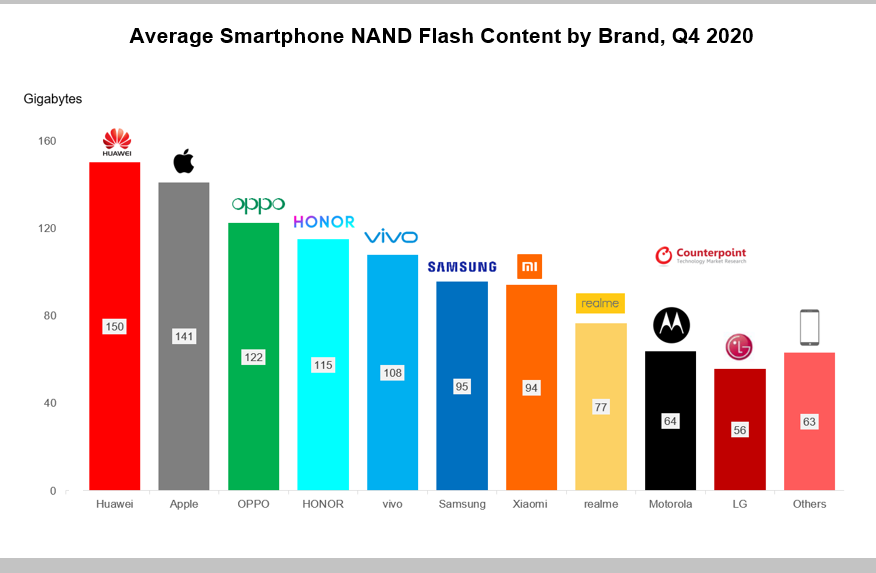Interested in buying a new smartphone but overwhelmed by the sea of options? Look no further! “The Essential Smartphone Buying Guide” is here to help you navigate through the confusion and make an informed decision. This comprehensive guide covers all the essential factors to consider when purchasing a smartphone, from the latest features and specifications to budget-friendly options. Stay tuned to find the perfect smartphone that suits your needs and preferences.

Operating Systems
iOS
iOS is Apple’s operating system that is used exclusively on their iPhones. It is known for its user-friendly interface and smooth performance. iOS offers seamless integration with other Apple devices like Macs, iPads, and Apple Watches, which makes it a popular choice among Apple enthusiasts. It also boasts a large selection of high-quality apps on its App Store. However, iOS is a closed system, which means that customization options are limited compared to other operating systems.
Android
Android is an open-source operating system developed by Google and is used by a wide range of smartphone manufacturers. It offers a high level of customization and flexibility, allowing users to personalize their devices to their liking. Android has access to the Google Play Store, which offers an extensive collection of apps, games, and other digital content. It is also compatible with a variety of third-party apps and services. Android phones come in various price ranges, making it accessible to a broad range of consumers.
Windows
Windows is Microsoft’s operating system that is primarily used on computers but has made its way into the smartphone market. Windows phones have a unique user interface, known as Live Tiles, which provides real-time updates and personalized information on the home screen. However, the Windows Phone platform has seen a decline in popularity in recent years, with limited app availability compared to iOS and Android. It is primarily recommended for users who heavily rely on Microsoft services and prefer a consistent experience across their devices.
Specifications
When choosing a smartphone, it is essential to consider its specifications to ensure it meets your requirements and expectations. Key specifications to evaluate are the processor, RAM, storage, display, battery life, and camera capabilities.
Processor
The processor, also known as the CPU, is the brain of the smartphone. It determines the device’s overall performance and speed. Smartphones generally come with processors from different manufacturers, such as Qualcomm, Samsung, or Apple. It is important to consider the processor’s generation and speed when selecting a smartphone, especially if you frequently use resource-intensive apps or games.
RAM
RAM, short for Random Access Memory, is responsible for multitasking and keeping applications running smoothly. Smartphones with higher RAM capacities can handle multiple apps simultaneously without experiencing lag or slowdowns. If you often use memory-intensive apps or multitask heavily, consider opting for a smartphone with ample RAM.
Storage
Storage capacity refers to the amount of internal memory available for storing apps, photos, videos, and other files. Some smartphones offer expandable storage options through microSD cards, while others have fixed internal storage. Assess your storage needs based on your usage patterns and consider opting for a device with larger internal storage or expandable options if you anticipate needing ample space for your files.
Display
The display plays a crucial role in the overall smartphone experience. Factors to consider include screen size, resolution, brightness, color accuracy, and whether it supports features like HDR (High Dynamic Range). Larger screens are ideal for multimedia consumption and gaming, while smaller screens offer more compact and pocket-friendly devices.
Battery Life
Battery life is an essential consideration, especially for users who rely heavily on their smartphones throughout the day. Factors that impact battery life include screen brightness, processor efficiency, and app usage. Look for smartphones with larger battery capacities or devices that offer fast charging technology to ensure longer usage between charges.
Camera
The camera capabilities of a smartphone greatly impact the quality of photos and videos you can capture. Consider factors like megapixel count, aperture size, optical image stabilization (OIS), and the presence of additional camera features like telephoto or ultra-wide lenses. Front-facing camera quality is also important, especially for selfie enthusiasts or video calls.

Size and Design
The size and design of a smartphone can greatly influence its usability and comfort. Factors to consider include screen size, form factor, build material, and weight.
Screen Size
Screen size directly affects the overall device size and usability. Larger screens provide more immersive multimedia experiences and enhanced productivity, but they may be less pocket-friendly. Smaller screens are more compact and convenient for one-handed use but may sacrifice some viewing real estate.
Form Factor
The form factor refers to the overall shape and design of the smartphone. Common form factors include the classic candy bar shape, slider phones, or foldable devices. Choose a form factor that aligns with your preferences and usage habits.
Build Material
The build material of a smartphone affects its durability, aesthetic appeal, and feel in hand. Common materials used include glass, metal, and plastic. Glass and metal offer a premium look and feel but may be more prone to damage. Plastic is lightweight and durable but may lack a premium feel.
Weight
The weight of a smartphone can significantly impact its portability and comfort. Lighter devices are easier to carry and handle, making them ideal for those who are always on the go. However, heavier devices may offer a more substantial feel and durability.
Connectivity
A smartphone’s connectivity options are important to consider, as they determine how you can connect and interact with other devices or networks. Key connectivity features to evaluate include network compatibility, Bluetooth, Wi-Fi, NFC, USB type, and the presence of a headphone jack.
Network Compatibility
Ensure that the smartphone you choose is compatible with your preferred network carrier. Different smartphones support different network bands, such as 4G LTE or 5G, which can impact your data speeds and coverage.
Bluetooth
Bluetooth allows you to connect wirelessly to other devices, such as headphones, speakers, or smartwatches. Ensure that the smartphone supports the latest Bluetooth version to take advantage of improved connectivity and compatibility with newer devices.
Wi-Fi
Wi-Fi connectivity is essential for accessing the internet and utilizing features like video streaming or online gaming. Look for smartphones that support the latest Wi-Fi standards for faster and more reliable connections.
NFC
Near Field Communication (NFC) enables contactless payments and quick file transfers between compatible devices. If you frequently use mobile payment services or want the convenience of transferring files with a tap, ensure that your chosen smartphone has NFC capabilities.
USB Type
USB Type refers to the connector used for charging and data transfer. The most common options are USB Type-C and Micro USB. USB Type-C is becoming the standard due to its reversible design and faster data transfer speeds.
Headphone Jack
Some smartphones have removed the traditional 3.5mm headphone jack in favor of wireless or USB-C audio solutions. If you prefer using wired headphones or have existing audio accessories, ensure that the smartphone you choose still offers a headphone jack.

Security
Smartphone security is vital in protecting your personal data and ensuring your device remains secure. Key security features to consider include fingerprint sensors, facial recognition, and passcodes.
Fingerprint Sensor
Fingerprint sensors provide convenient and secure access to your smartphone by scanning your fingerprint. They offer quick and reliable unlocking methods, making them ideal for users who value convenience and privacy.
Facial Recognition
Facial recognition technology allows you to unlock your smartphone using your face as the authentication method. This feature offers an added layer of security and can be especially useful in low-light situations where fingerprint sensors may struggle.
Passcodes
Traditional passcodes or PINs are the most basic form of smartphone security. They require you to input a unique code to unlock your device. Although not as advanced as fingerprint or facial recognition, passcodes remain a reliable option for securing your smartphone.
Battery
The battery life and performance of a smartphone can greatly impact your usage patterns and overall satisfaction. Consider the battery capacity, charging technology, and expected battery life when selecting a device.
Battery Capacity
Battery capacity is measured in milliampere-hours (mAh) and indicates how much charge the battery can hold. Smartphones with larger battery capacities will generally provide longer usage between charges. However, it is essential to note that battery life can vary based on other factors such as screen size, processor efficiency, and app usage.
Charging Technology
Rapid charging technologies like Qualcomm Quick Charge or USB Power Delivery (PD) allow for faster charging times when paired with compatible chargers. Consider smartphones that support fast charging if you often find yourself in need of a quick battery boost.
Battery Life
Battery life refers to how long a smartphone can perform on a single charge. It is affected by various factors such as screen brightness, processor efficiency, app usage, and network connectivity. While the actual battery life can vary depending on usage patterns, choose a smartphone with reliable battery life based on reviews and manufacturer specifications.

Storage
The storage capacity of a smartphone determines how much data, including apps, photos, videos, and files, the device can hold. Evaluate the internal storage and the availability of expandable storage options to ensure it meets your needs.
Internal Storage
Internal storage refers to the built-in memory capacity of the smartphone. Consider your usage patterns and the types of files you typically store on your device. If you frequently download large apps or capture high-resolution photos and videos, opt for a smartphone with ample internal storage.
Expandable Storage
Some smartphones offer the option to expand storage capacity via microSD cards. This allows you to increase the available storage beyond the built-in capacity. If you anticipate needing additional space in the future or prefer the flexibility of expandable storage, look for smartphones that support this feature.
Camera
The camera capabilities of a smartphone are a crucial consideration for many users. Evaluate factors like megapixels, camera features, and the quality of the front-facing camera when determining which device is best suited for your photography needs.
Megapixels
Megapixels determine the resolution and level of detail in the photos captured by the smartphone’s camera. However, higher megapixels do not necessarily equate to better image quality. Other factors such as sensor size, lens quality, and image processing algorithms also contribute to the overall camera performance.
Camera Features
Camera features vary between smartphones and can greatly enhance your photography experience. Look for features like optical image stabilization (OIS) for better low-light photography, telephoto or ultra-wide lenses for versatile shooting options, and specialized modes like night mode or portrait mode.
Front-facing Camera
The quality of the front-facing camera is essential for selfie enthusiasts and video calls. Consider factors like megapixels, aperture size, and the presence of front-facing flash or other software enhancements. If selfie quality is a priority, choose a smartphone with a high-quality front-facing camera.

Price Range
Smartphones vary in price, with options available in different price ranges to suit various budgets and preferences. Evaluate the price range that aligns with your budget and expectations.
Budget
Budget smartphones offer essential features and specifications at a more affordable price point. These devices are suitable for casual users who prioritize cost-effectiveness and basic functionality over advanced features.
Mid-range
Mid-range smartphones offer a balance between performance, features, and price. They typically provide a good selection of features without reaching the premium price range. Mid-range devices are suitable for users who desire a well-rounded smartphone experience without breaking the bank.
Flagship
Flagship smartphones are the top-of-the-line offerings from manufacturers. They typically boast cutting-edge technology, high-quality materials, and advanced features. Flagship devices come with premium price tags but deliver exceptional performance and experiences. These smartphones are ideal for power users, enthusiasts, and those who demand the latest and greatest in smartphone technology.
Reviews and Ratings
Reviews and ratings can provide valuable insights into a smartphone’s performance, reliability, and user satisfaction. Consider professional reviews from technology experts and influential publications, as well as user ratings and customer reviews to gather a comprehensive understanding of a smartphone’s strengths and potential drawbacks.
Professional Reviews
Professional reviews from reputable technology publications can offer in-depth analysis and evaluation of a smartphone’s performance, features, and overall user experience. They often provide detailed information about the device’s strengths, weaknesses, and noteworthy features. Professional reviews can help you make an informed decision based on experts’ assessments.
User Ratings
User ratings are often available on websites or apps where consumers can rate and review products. These ratings provide a collective opinion from individuals who have purchased and used the smartphone. Consider user ratings to gain insights on real-world experiences and user satisfaction levels.
Customer Reviews
Customer reviews offer personal experiences and insights from individual users who have purchased the smartphone. These reviews often highlight specific pros and cons and can provide valuable information about the device’s performance, durability, and overall satisfaction. Consider the overall sentiment expressed in customer reviews to gauge the general consensus on a smartphone’s quality and performance.
With this comprehensive smartphone buying guide, you are equipped with the knowledge and understanding needed to make an informed decision when purchasing your next smartphone. Consider your priorities, budget, and usage patterns, and evaluate the operating system, specifications, size and design, connectivity options, security features, battery life, storage, camera capabilities, price range, as well as reviews and ratings. By doing your research and considering the factors important to you, you can find a smartphone that best suits your needs and preferences. Happy shopping!



